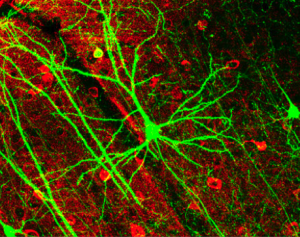FRIDAY, 29 JUNE 2012
Researchers at Washington University School of Medicine in St. Louis have now discovered a protein called dual leucine zipper kinase (DLK), which is required for the regeneration of peripheral nerves in mice. The group led by Professor Aaron DiAntonio showed that DLK tells the nerve cell it has been injured by promoting the transport of signalling proteins from the site of injury to the cell body, where they activate regeneration genes.The researchers found that when they deleted DLK in mice, two of these signalling proteins are no longer transported to the cell body. As a result, the nerve cell does not know that it is injured, regeneration machinery is not activated and nerve regrowth is dramatically reduced. In addition, when a peripheral nerve is injured twice, it heals much more rapidly after the second injury than the first. DiAntonio and colleagues now show that DLK is also required for this effect, underlining the importance of this protein in peripheral nerve regeneration.
The activation of DLK may also help to repair the connections in the brain and central nervous system (CNS) which have been lost following stroke. Some of the signalling factors promoted by DLK in the periphery are not activated in the brain and so the nerves do not know that they have been injured. “It’s an exciting idea — but not at all proven — that activating DLK in the central nervous system could promote its regeneration” says Professor DiAntonio.
DOI 10.1016/j.neuron.2012.04.028
Written by Jannis Meents.

